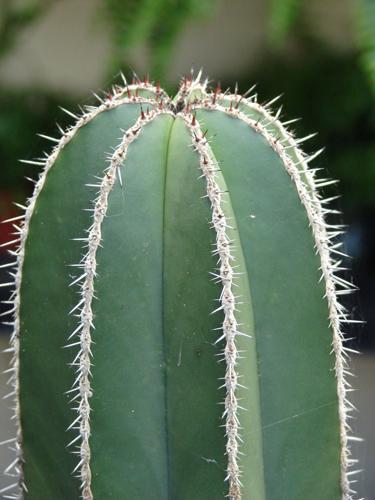Q: I have attached photos of our problem sago. This plant is over 20 years old, growing in a pot inside a sheltered south-facing entryway. We have re-potted it several times but the size and weight are more than we can deal with now. It has been a beautiful focal point to our entry way but now is falling over the pot onto a fountain and has become more of a problem than a pleasure.
What is the lifespan of sago? I hate to destroy this plant but can’t think of any way to salvage it.
A: Sago (Cycas revoluta) can live hundreds of years and their mature size, if properly maintained, can be 6 to 10 feet tall and too large for a container.
They are very slow growers and at the rate of about one inch per year can be maintained in containers for a long time.
If you have a place in your landscape where it could be planted in the ground, you might be able to enjoy this plant for years to come. Although in their native subtropical habitat they can be grown in full sun, the best spot in our area would be at least partially shady to prevent sun burning of the fronds by the afternoon sun and in well-drained soil with a good amount of organic matter.
Q: I have an ash tree that is now going on 4 years old. The woodpeckers have never bothered it but now they are beginning to peck at it. It attracts ants, which are beneficial to the woodpeckers, and I usually let nature take it’s course but should I be concerned about these holes? Are they just superficial and will not harm the tree? I could wrap it but I’m thinking the birds will just move to other areas of the tree.
A: A few woodpecker holes are not a big deal. If they return to the same tree every year the damage could be a problem over the long haul. Sapsuckers will drill small holes to feed on sap and the sap may attract insects.
Your idea for wrapping the tree where the damage is occurring may have some benefit as it may drive them to other nearby trees instead of the one you want to protect. Burlap is a suitable material to try as a wrap. Other materials good for excluding birds include hardware cloth and plastic netting.
It’s not a good idea to leave the wrap on all year as it can trap moisture and cause decay of the bark so it’s good to observe when the birds are active so you can protect your tree at the appropriate times.
Q: I have a question regarding a Mexican fence post cactus we have planted in our landscaping. We remodeled our patio two years ago and had this cactus transplanted to a different location in the patio. In the last several months, the plant has a brownish tint and we are wondering what is the cause and what we should do about it.
The cactus still feels firm; the soil was treated for grubs in the summer; the plant is on light irrigation—same schedule as prior to transplanting. We also lightly fertilize all our plants in the spring.
We are located in the Catalina foothills in the Northeast part of Tucson. Do you think it is getting too much or too little water?
A: The Mexican fencepost cactus (Pachycereus marginatus) is a tough plant but there are always a few things that could go wrong.
.When transplanting cacti it is best to orient them in the same direction as they were originally planted. Plants develop a tolerance for the amount of sun they receive on each side and facing them in a new direction may cause them to become sunburned.
The brown color of your cacti looks like sunburn so this is a potential cause of the discoloration. The cacti may recover from this, time will tell.
Another potential problem is rot caused by a fungus that may have entered through a wound in the transplant process. Because you aren’t able to detect any softening of the exterior this is only a possibility.
Once again, time will tell. Another potential problem is the soil where it is planted. Cacti do best in well-drained soil and suffer from overwatering if the soil holds its water too well. Irrigation for cacti should be light, as in once every two weeks in the summer and every three weeks in the spring and fall. No irrigation should be applied in the winter season or during the monsoon season.
Overall, it would be good to keep an eye on the situation to see if the damaged area is spreading, remaining the same, or getting better. These cacti don’t have a common grub problem so you might discontinue treating for them.





